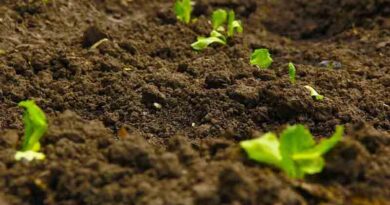Top Ways to Achieve Adequate Soil Health for High Crop Yielding
08 June 2022, New Delhi: Soil is rightfully the most critical constituent of the earth’s biosphere. For any country, good soil health is a key indicator of its long-term ecosystem sustainability. There is a multiplicity of scientifically proven benefits that can be attributed to good soil health. Improvement in land management, sustainable crop production, and enhanced quality of agro landscape are only a few of the many perks that decent quality soil entails.
Time and again, there have been numerous revelations in the agricultural space expediting multiple approaches to optimal soil health. The appropriate way, however, is to combine certain new generational techniques like high-tech tilling, and some timeless classical practices like crop rotation. Let’s look at some interesting ways to attain a prolific soil structure:
- Composting
Compost, or may we call it “nature’s best fertiliser”? Because it contains numerous vital nutrients for plant development, it is frequently used as a fertiliser. The best thing about composting is that it is imperative to texture-enhancement, moisture retention, and cutting back on the use of synthetic and harmful fertilisers. Concentrating on soil replenishment is paramount to achieving great soil health. And what better and inexpensive way to do that than composting!
- Crop rotation
Crop rotation is a smart way to increase the process of the soil while decreasing erosion. Intercropping breaks pest and disease cycles and enhances soil condition by boosting biomass from various crops’ root systems and stimulating agricultural biodiversity. Every crop has a different nutrient requirement. While some may derive nutrients from deeper soil layers, the case may not be the same for others. Crop rotation helps in effective nutrient Management by plants, thus supplying more organic matter. Devising an adequate rotation sequence will significantly boost soil health and stabilise soil particles.
- Avoiding chemical compounds
Irrespective of your soil type and texture, using chemicals on your land is one guaranteed way of risking your soil health. Whether you’re using herbicides, pesticides, synthetic fertilisers, weed killers or fungicides, some of these may be poisonous to your soil life in the long run and will end up tainting its fertility. Additionally, avoiding chemicals facilitates the growth of good microbes and bacteria that may have taken abode in your soil.
- Good Tillage Habits
Tilling, also referred to as ploughing, can be a game-changer for achieving optimal soil health. While some farmers may carry on this practice all year round, the right time for tilling is just when the first rains have fallen. Tilling is primarily done to loosen and eventually aerate the soil, so it makes the planting of crops easier. It is also a great way of combining harvest residue, organic material, and nutrients evenly into the soil. Right tillage habits can go a long way in ensuring a smooth and steady farming process, from sowing to harvesting. mechanical removal of the weed, drying up the soil before seeding, as well as exposing the crumbled pieces of soil to smoothen the land. Usually, if you’re tilling a small area of land, it can be done using mechanical equipment but if there’s a large farm to plough, you might want to check out a range of good & effective Power tillers.
Recognizing the need of propagating good tillage habit amongst Indian farmers, Honda India Power Products Ltd. has recently launched a compact, affordable, yet powerful Tiller : FQ650 (4.1kW/5.5hp) further strengthening its product range already having FJ500 (3.6kW/4.8hp) ,F300(1.49kW/2hp). Farmers require a compact, robust, and cost-effective solution for their routine farming operations like Land preparation & De-weeding. Honda Tillers deliver unparalleled fuel efficiency along with optimal performance and durability, while being lightest in their class. Using these proven and reliable Honda Tillers will not only simplify your farm operation but also help you achieve better farm productivity. Their cutting edge 4-stroke technology is beneficial in providing new-age solutions with sustainable development, thus bringing out the best of soil-machine-human interaction.
- Plant Cover Crops
In the agro ecosystem, the concept of cover crops is practised extensively. These are grown with the idea to cover the soil albeit harvesting the crop. Putting a good farm strategy in place will render you an action plan for every season and climate. Cultivating grain grasses like oats and barley in spring, hard legumes like peas amidst winter but prior to summer, and warm legumes like soybeans before the onset of fall are amazing ways to accelerate soil fertility.
Healthy and well-maintained soil is the cornerstone of profitable and sustainable agricultural growth. Achieving soil fertility is the easiest way to produce abundant and high-quality crops, and nurture plant growth to elevate the process of agricultural crop production. Make these five fool proof tips your mantra in getting one step closer to a replenished, desirable land. Following these, with just the minimal yet mindful input, you can increase your farm productivity and take your farming game a notch higher!
Also Read: Crop Care Federation of India (CCFI) launches latest video on farmer welfare & training programs















